LPG cylinders
Liquefied petroleum gas (LPG) is a fuel commonly used in various recreational activities. The LPG used in the gas cylinders sold in Finland is propane. LPG is stored and transported in liquid form in a cylinder and used in gaseous form.
LPG is a highly flammable fuel, which may form an explosive mixture with air. For this reason, the use of LPG always involves a hazard. For safety reasons, LPG is scented; the scent is a warning signal of a gas leak.
On this page, you can read more about LPG cylinders and the related FAQ. Information on the conformity of gas cylinders
To ensure that your LPG device works properly and is safe to use, carefully read and follow the equipment instructions. Always make sure to use the right type of regulator and gas cylinder. Verify it from the instructions of the gas equipment.
Identifying gas cylinders
You can identify a suitable LPG cylinder by the colour of the cylinder, valve type, the winged label on the neck and the stamps on the cylinder. Learn to identify different gas cylinder types to avoid mistaking a motor gas cylinder for a normal LPG cylinder.
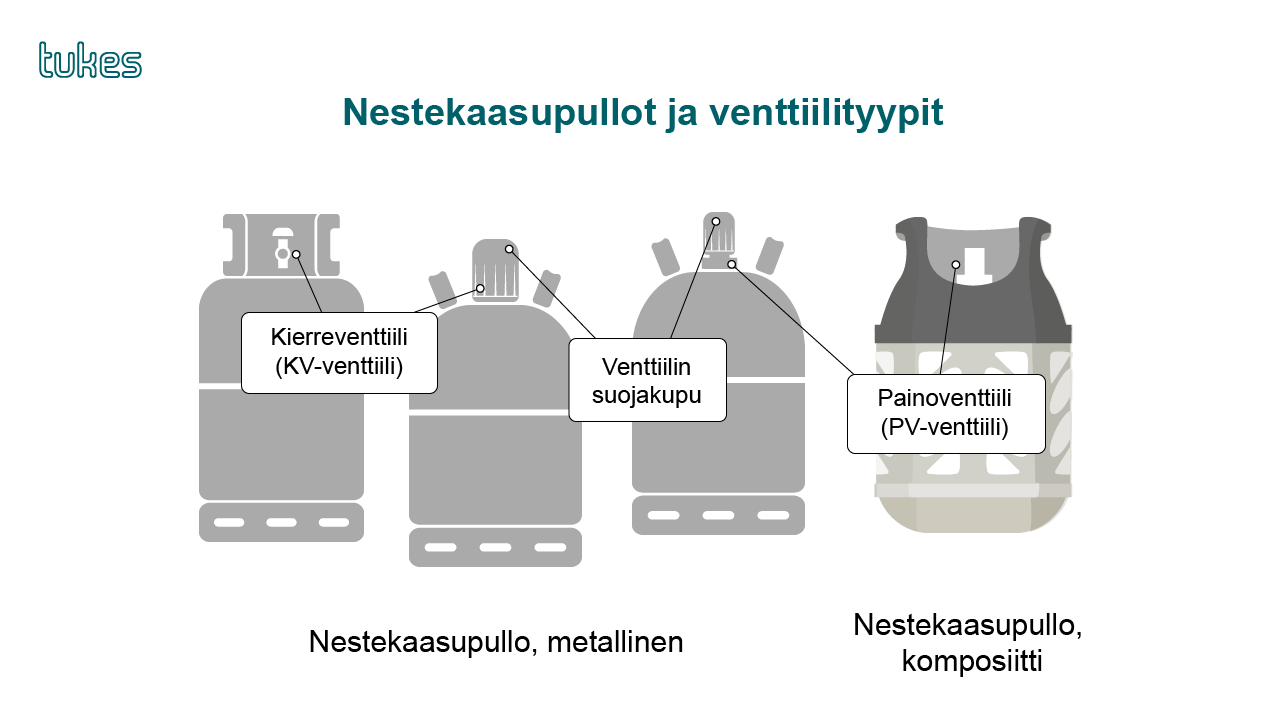
LPG cylinder colours
The steel and aluminium cylinders containing liquefied petroleum gas are completely grey. The top part of a composite cylinder is normally grey.
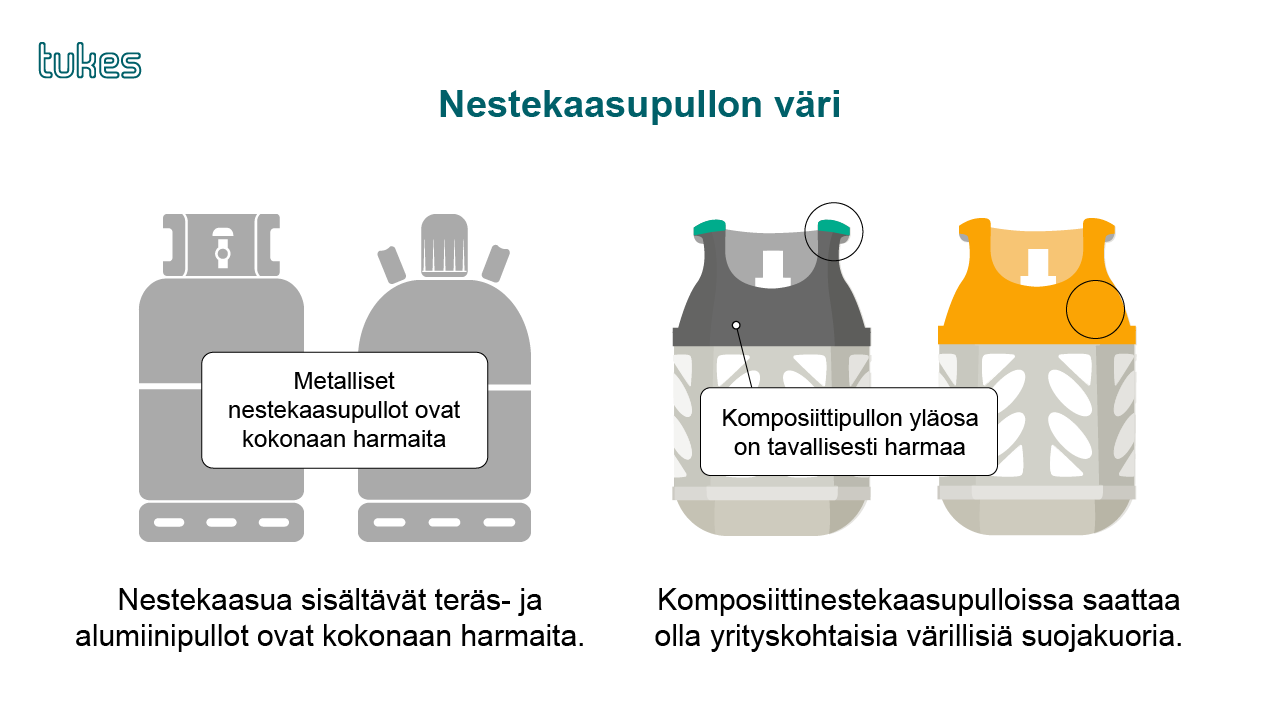
Motor gas
Please note that a motor gas cylinder has a red collar. Motor gas is liquefied petroleum gas, but connecting a motor gas cylinder to any equipment other than a combustion engine forklift truck or work machine causes a serious hazard. Motor gas is only allowed to be used as the operating gas of a combustion engine, for example, in a forklift truck. It may never be used as a substitute for LPG!
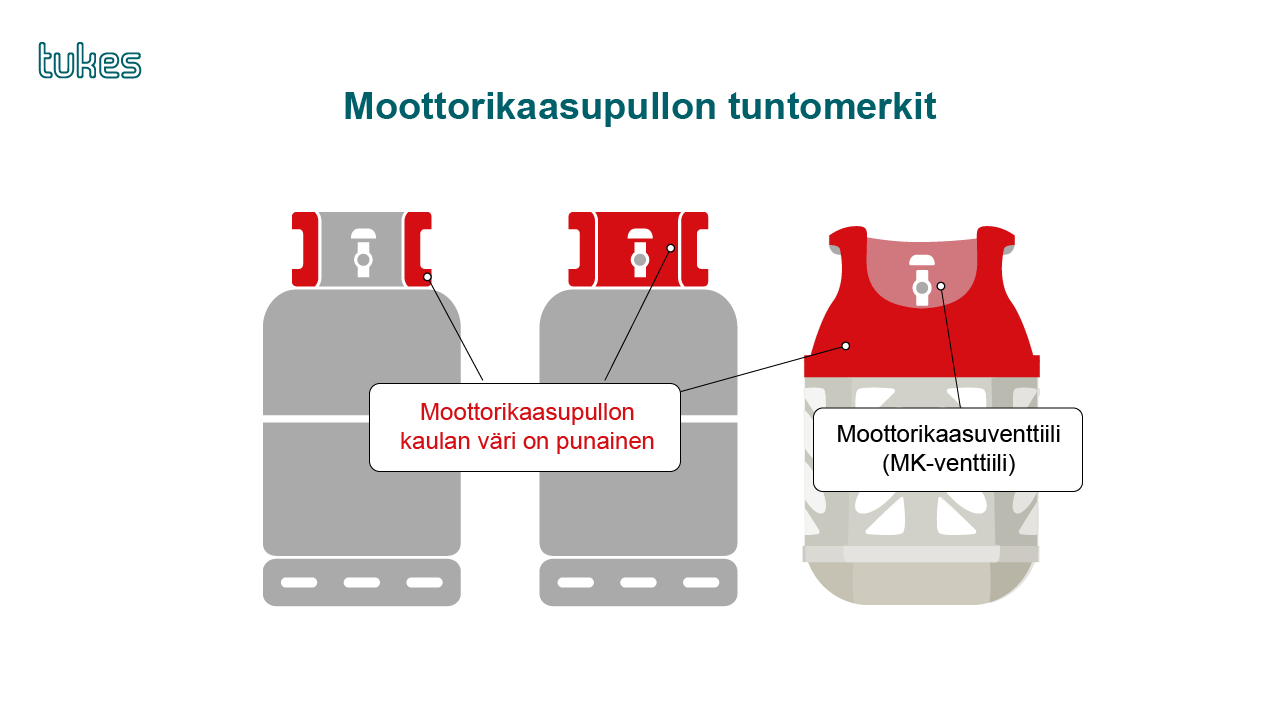
Label
The label on an LPG cylinder includes, e.g. the following markings:
- “Liquefied petroleum gas” text
- UN 1965 marking
- The supplier’s contact information
- Warnings
Do not use a labelless cylinder – return it to the supplier.
Stamped markings on the top of the cylinder
In addition to the label, the LPG marking is stamped on the top part of the cylinder. Other stamp markings show the certification, inspections, manufacturer, empty weight, pressure and volume of the cylinder.
Inspection marking
The time (year) of the next periodic inspection is marked on the top of the cylinder with a label/stamp.
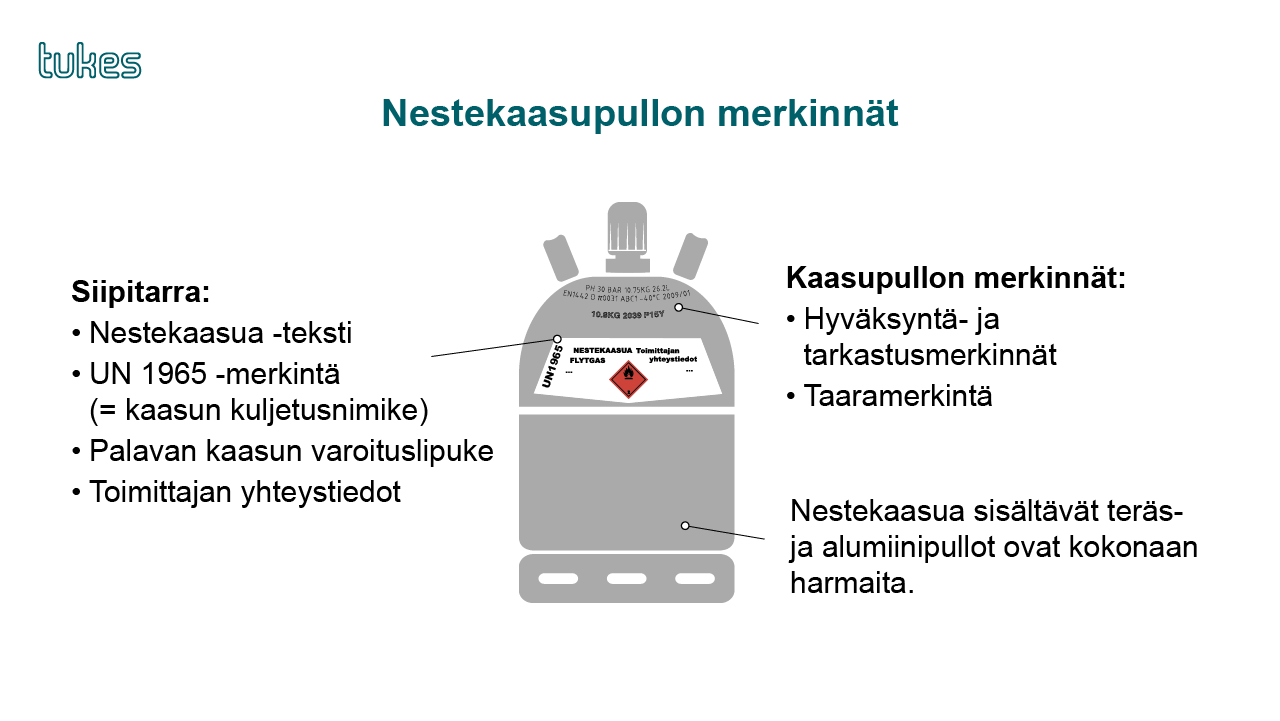
FAQ
LPG valve types
The LPG cylinders sold in Finland come with four different valve types. When buying gas, ensure that you get the right type of valve:
- Push valve. Primarily used in households.
- A side or threaded valve. Primarily used in households, caravans, camper vans and boats. You can tell the valve by the O-ring seal on the face of the connection.
- Motor gas valve. Only allowed to use as operating gas for combustion engines, for example, in forklift trucks. The liquefied petroleum gas flows out of the cylinder in liquid format. You can tell the valve by the even face of the unsealed connection.
- Industrial threaded valve. Only used with high-pressure regulators in professional applications. You can tell the valve by the even face of the unsealed connection.
When travelling, remember to pay attention to the differences in cylinder valves between different countries.
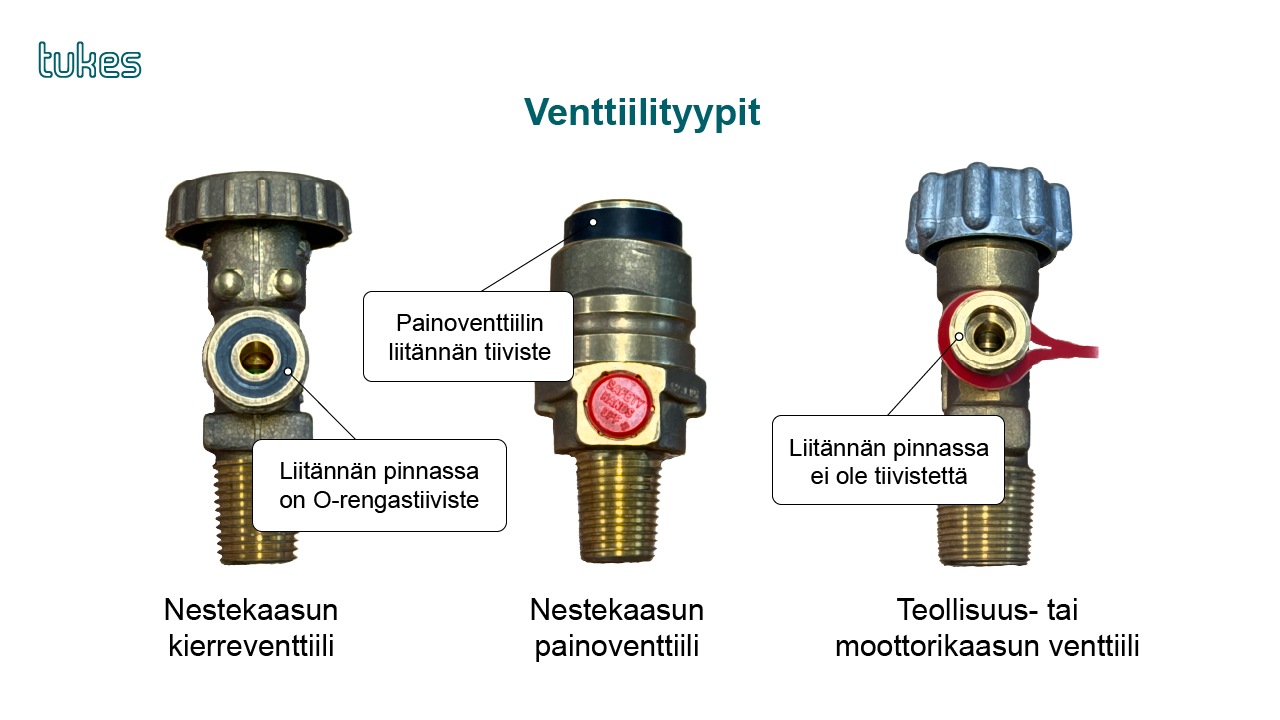
LPG cylinder inspection markings
An inspection marking is stamped and/or printed on the top of the gas cylinder, showing the year of the next periodic inspection.
The gas cylinder may not be sold if the inspection has expired. If the inspection expires during use, you can still use the cylinder but you should change it within a year.
Amount of LPG in the cylinder
LPG cylinders are always filled 70% full, i.e. commercially available cylinder are always a little bit “short”. LPG is stored and transported in liquid form in a cylinder and used in gaseous form. The content of a full LPG cylinder is 80% liquid and 20% gas.
You can check the amount of gas in a metal cylinder by weighing the cylinder and reducing its empty weight from the total weight. The empty weight, which is stamped on the top of the cylinder, varies by cylinder model. In composite cylinders, you can see the amount of gas thanks to the see-through case.
LPG cylinder seal
An LPG cylinder can be sold either with or without a seal. Some gas suppliers seal their cylinders, but it is equally legal to sell unsealed cylinders.
Position of the LPG cylinder
The LPG cylinder should always be transported, stored and used upright with the valve pointing out. If the cylinder is tilted during use, the gas will come out in liquid form, causing a hazard.
Gas comes out of the LPG cylinder in liquid form
Do not store or transport an LPG cylinder horizontally because gas may come out of a horizontal cylinder in liquid form. Also, when the cylinder is horizontal, the safety valve may not work properly. If the cylinder has been stored horizontally, turn the cylinder upright and try again after a while. Make sure that you have an LPG cylinder with a threaded valve and not a motor gas cylinder with a threaded valve. See the image for how to identify a motor gas cylinder.
Leaking LPG cylinder
If the LPG cylinder is leaking, avoid touching the leaking gas.
- Do not smoke or light a fire.
- Shut the cylinder valve.
- Remove the cylinder valve.
- Ventilate the space and move the cylinder out.
- Check the gas cylinder and its connections with a leak detector or soapy water.
If it is not possible to shut the cylinder valve, move the cylinder outside far away from ignition sources.
- Let the cylinder depressurise and isolate the surroundings.
- Call the fire service.
- As a result of a major leak, leaking gas may cause a risk of explosion in areas below the cylinder, such as sewers or cellars.
File a complaint with the supplier (the supplier will file a complaint with the manufacturer).